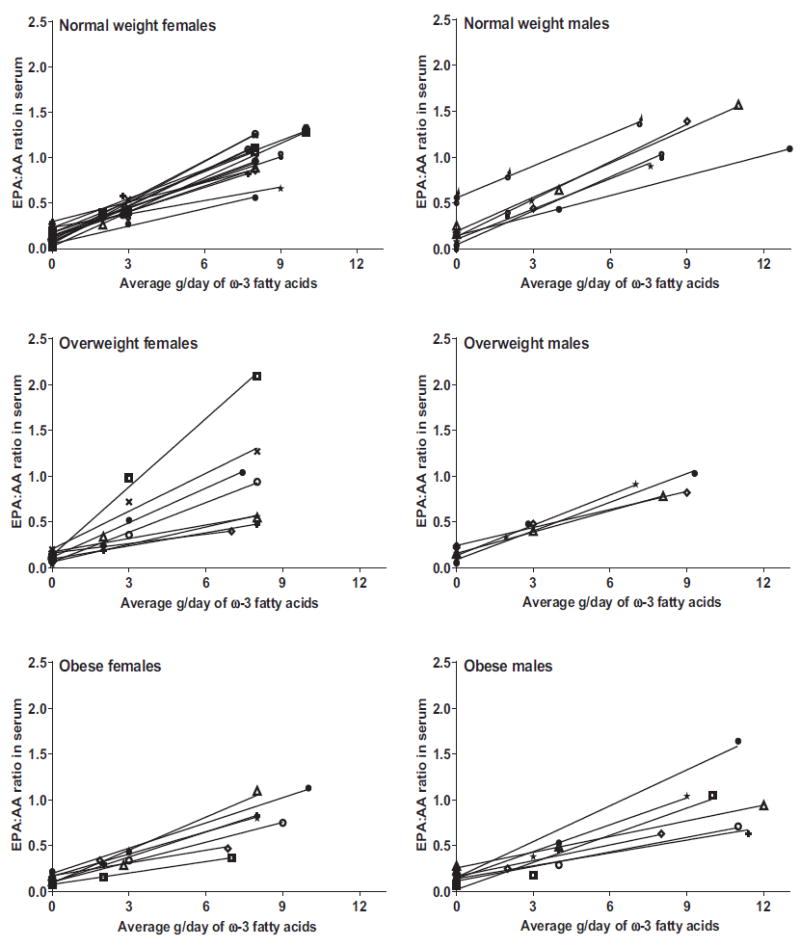Figure 4.

Serum eicosapentaenoic acid to arachidonic acid ratios (EPA:AA) at two predosing time points and after 2 weeks of dosing with low or high test doses of ω-3 fatty acids, shown by gender and weight status in individual participants. The serum EPA:AA responses were linear for each subject, allowing for facile calculation of the target dose needed to achieve the desired serum EPA:AA ratio for each study participant. Each 1 g capsule contained 530 mg EPA, 150 mg DHA, and 101 mg other ω-3 fatty acids. The slope and intercept of each line was used to derive a personalized target dose for each individual based on our model: a higher intercept and a steeper slope resulted in lower target dose for the subsequent 12-week period. The curves show the heterogeneity of responses to ω-3 fatty acid dosing: both the slopes and intercepts vary widely between individuals. This heterogeneity in responses underscores the need for personalized approaches to dosing.
